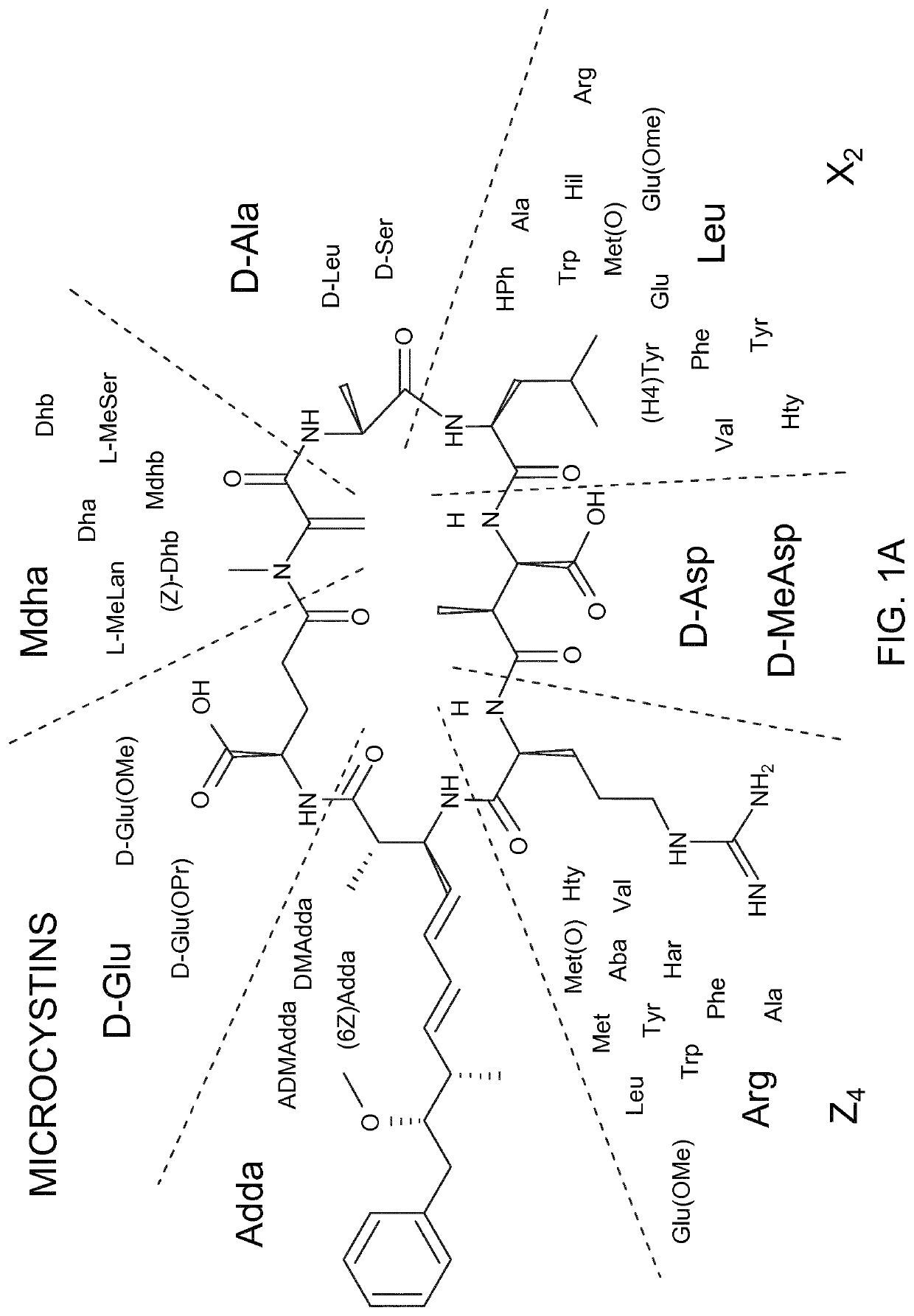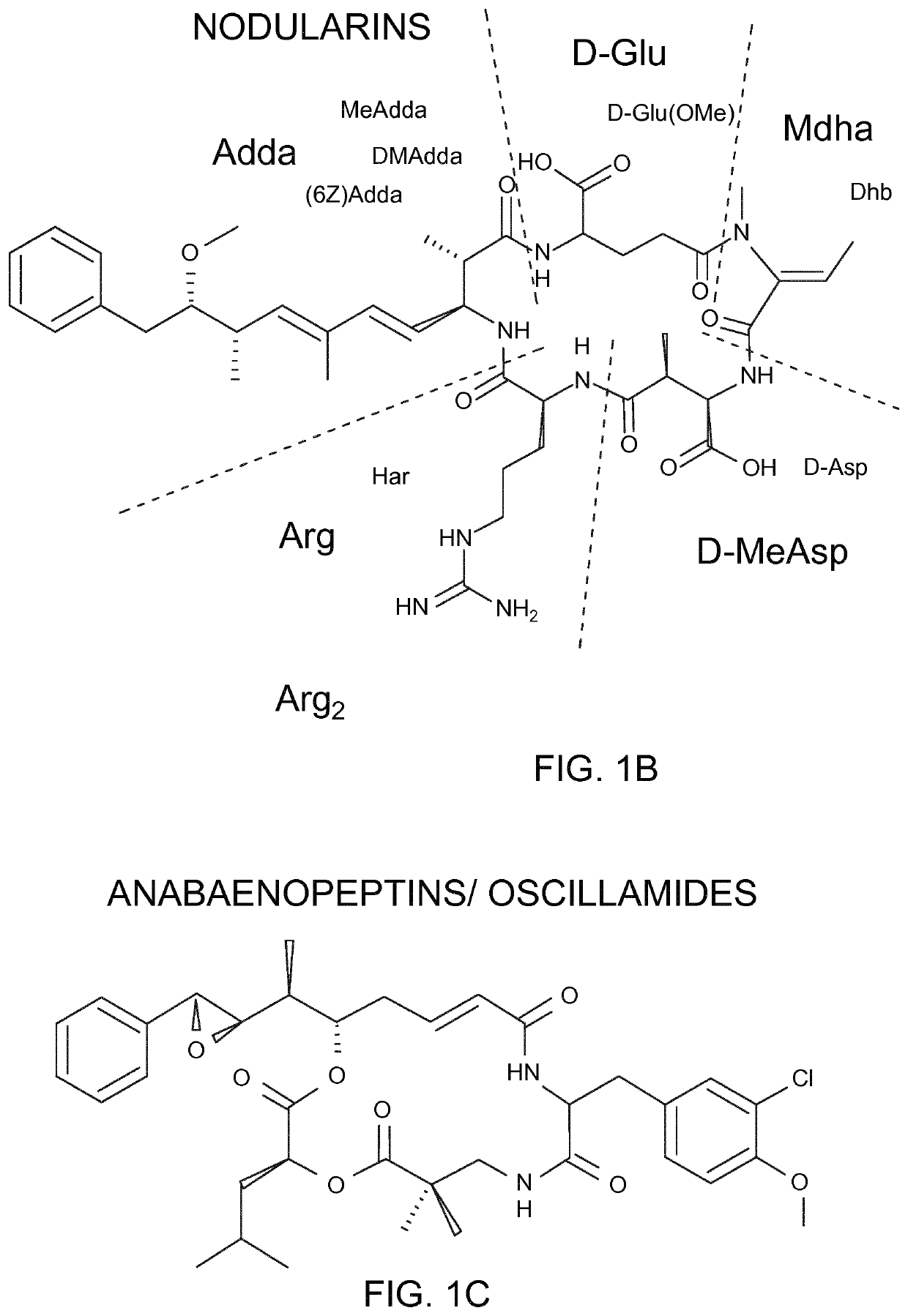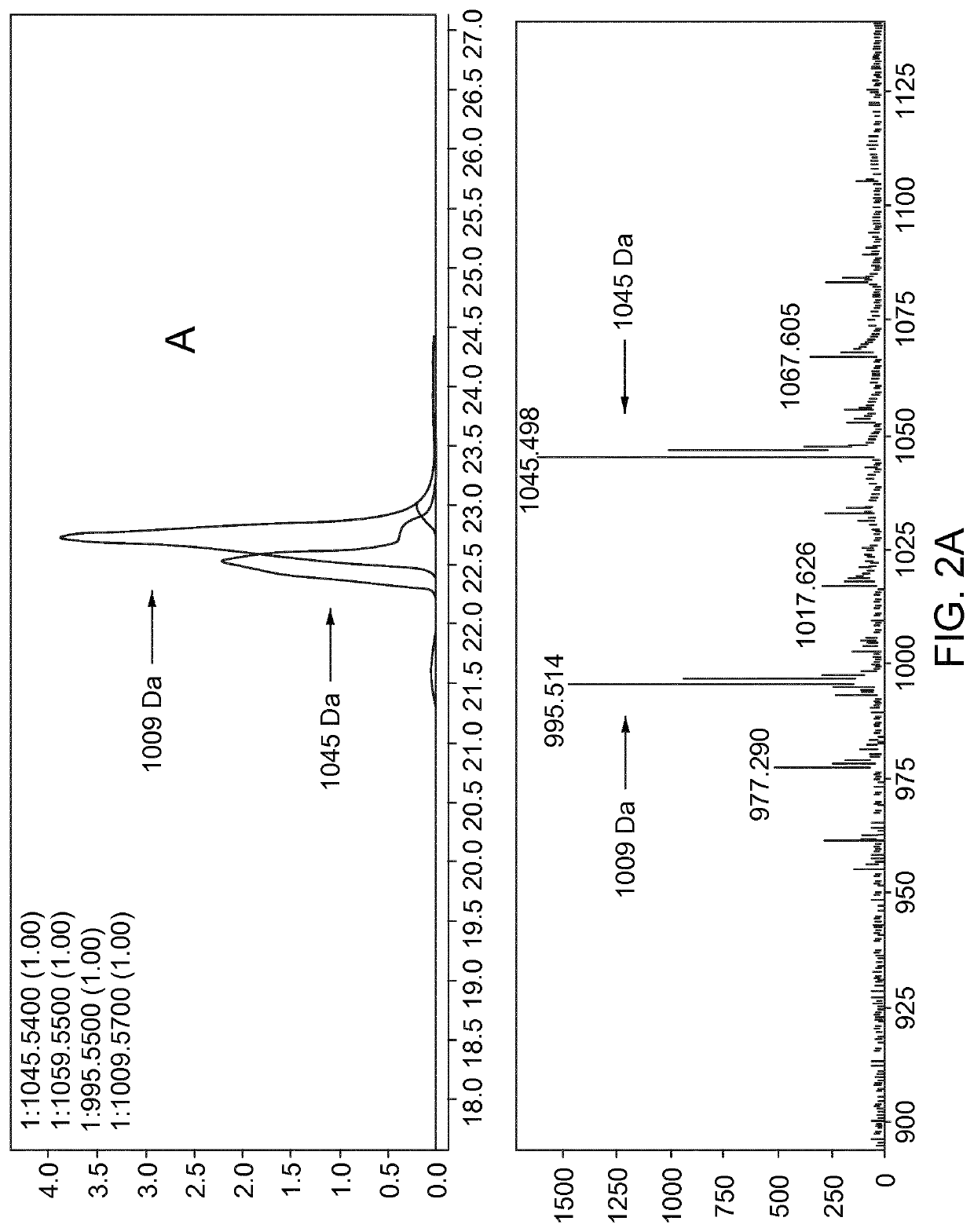Method for modifying microcystins and nodularins
a technology of microcystins and nodularins, applied in the field of cancer treatment, to achieve the effect of convenient preparation and favorable spacial distan
- Summary
- Abstract
- Description
- Claims
- Application Information
AI Technical Summary
Benefits of technology
Problems solved by technology
Method used
Image
Examples
examples
[0231]Successful feedings of modified substrates were performed in different cultivation systems and scales allowing for screening (small scales of up to 10 ml; see FIG. 2 A-D) and for production (2-20 L scales; see FIG. 24, 25) of modified non-ribosomal peptides. The different screening scales comprise:
[0232]1.6 ml cultures cultivated in ca. 2.2 ml deep-well microtiter plates (dw-MTP) whereas CO2 supply was assured by intense shaking of 600 rpm and a constant CO2 concentration of 5% in the head space above the dw-MTP. Illumination occurred via LED panel or vial fluorescence bulbs for 24 hours a day. Light intensity was adjusted in dependence of the strain and its growth phase between 35-250 μmol / s*m2. The temperature was strain-specific varied between 20° C. and 30° C.
[0233]A cultivation according to the method is thus preferred wherein the shaking is between 400-800 rpm and a constant CO2 concentration of 1 to 10% in the head space, preferably 3 to 8% in the head space.
[0234]10 ml...
PUM
| Property | Measurement | Unit |
|---|---|---|
| temperature | aaaaa | aaaaa |
| temperature | aaaaa | aaaaa |
| optical density | aaaaa | aaaaa |
Abstract
Description
Claims
Application Information
 Login to View More
Login to View More - R&D
- Intellectual Property
- Life Sciences
- Materials
- Tech Scout
- Unparalleled Data Quality
- Higher Quality Content
- 60% Fewer Hallucinations
Browse by: Latest US Patents, China's latest patents, Technical Efficacy Thesaurus, Application Domain, Technology Topic, Popular Technical Reports.
© 2025 PatSnap. All rights reserved.Legal|Privacy policy|Modern Slavery Act Transparency Statement|Sitemap|About US| Contact US: help@patsnap.com



